2018-2019 CTL Fellows
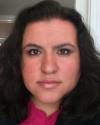 Diana Aldrete, Visiting Assistant Professor of Language and Culture Studies
Diana Aldrete, Visiting Assistant Professor of Language and Culture Studies
“Building Empathy in the Classroom Through Literature”
Empathy is a term that often describes a wide variety of character traits, behaviors, and reactions to a particular stimulus. This project builds upon recent interest on the connection between narrative and empathy in higher education, in questioning: (1) can empathy be taught, or is it intrinsic in the individual? and (2) can literature foster empathy? This project will focus on two approaches to empathy: affective and cognitive. Affective empathy, or shared emotional response, occurs when the individual shares another person’s emotions. Cognitive empathy, or perspective taking, occurs when a person is able to consider another individual’s perspective or imagine him/herself in the situation of another. As a CTL fellow I will gather different methodologies in order to implement the use of literature in the classroom in order to foster empathy and to promote more compassionate and empathetic conversations surrounding current socially divisive or controversial, such as immigration and the Mexico-U.S. border. With my course, “Narratives of Border Identity” (HISP 353) for the Fall 2018, I plan to restructure my lesson plans to give emphasis on empathy while students engage with narratives from the border, all while also discussing the many political implications of the border and connect with theoretical and critical frameworks. This will give students the ability to further their intellectual ability, while also fostering their social and emotional character. This project also intends to put into practice empathy in other Spanish-language courses (from intermediate to more advanced) with the use of literature, and could serve as an example for other disciplines that wish to incorporate literature into their classrooms with an emphasis on fostering empathy.
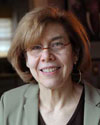 Janet Bauer, Associate Professor of International Studies
Janet Bauer, Associate Professor of International Studies
“Slow Teaching, Deep Reading, Complex Anthropology”
“Slow Teaching, Deep Reading, Complex Anthropology” explores the benefits and challenges for students and instructors of a pedagogy that relies on close attention to fewer texts/materials than usual, that intensively uses these texts/materials in creative ways designed to motivate student curiosity, and that aims to unsettle simplistic, conventional, and uncritical ways of thinking about and evaluating course content.
Lauren Caldwell, Visiting Assistant Professor of History and Classics
“Using Role-Immersive Activities in the History Classroom to Increase Student Engagement”
Lauren Caldwell will focus on developing engaging materials for the teaching of Greek and Roman history. In particular, she will be investigating the potential for role-immersive, competitive games from the Reacting to the Past series to create a dynamic relationship between students and textual evidence from the past. Reacting games are known for helping students build leadership and teamwork experience along with writing and speaking skills: Students take take on active roles in historical scenarios and to compose their own persuasive speeches and papers with the object of winning the game. She aims to redesign two of her courses, an introductory Roman history survey and a seminar course on Julius Caesar, to include the game “Beware the Ides of March: Rome in 44 BCE.”
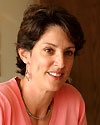 Carol Clark, Associate Professor of Economics
Carol Clark, Associate Professor of Economics
Economics 101 attracts students with a wide variety of academic interests and who go on to major in many different disciplines. One of the challenges in teaching this course is to find the right pedagogical approach so that all students in the class can engage fully with the material. With this in mind, I would like to rethink what material is presented in Economics 101, and how that material is presented, including the sequencing of the material; the use of historical case studies; and the development of group projects that require working with real data sets.
Inspiration for the project comes from both my own experience and the recent collaborative work of an international group of economists, who together have launched an online, open-access textbook that offers a new approach to how basic economic principles are communicated to students. With this book as a starting point, I will initially focus on three questions: How should I guide student preparation for classroom discussions? What type of tutorials can I design to prepare students for a different sequencing of the course material? And, what might I eliminate from the present content of the course to make room for the proposed changes, without putting students at risk who wish to go on in Economics?
 Dario Del Puppo, Professor of Language and Culture Studies
Dario Del Puppo, Professor of Language and Culture Studies
“Creativity in the Humanities Classroom”
We learn best when we are inspired and when we are encouraged to be creative. This is likely because we find greater meaning in what we are studying and, therefore, we take more responsibility for our learning. I propose to develop classroom exercises that will encourage students’ to be more engaged and creative in the classroom. Specifically, I plan to revise my first-year seminar, Food, Fitness and the Journey to Self-Discovery (co-taught with Kevin MacDermott) and to develop a new course about ‘Italian Design’ with an emphasis on enhancing student-centered learning.
 Mary Dudas, Visiting Assistant Professor of Political Science
Mary Dudas, Visiting Assistant Professor of Political Science
“Integrating Everyday Objects into the Teaching of Text-Based Courses”
The teaching of political theory is almost exclusively based on canonical written texts, but Sacvan Bercovitch observes that American political thought is often transmitted in popular culture. In American Political Thought (APT) we will integrate a variety of materials, including visual culture and the built environment, that symbolize the beliefs, ideas, and accepted wisdom of American political thought. These materials are often unconsciously consumed and interpreted and one of our goals will be to make the interpretation of visual culture and the built environment more deliberate and critical. APT will place particular emphasis on visual culture, including architecture, available in Hartford and at Trinity. The class will visit the Wadsworth Athenaeum and Harriet Beecher Stowe Center, we will examine the Trinity Long Walk as an example of Collegiate Gothic style architecture, and work at the Watkinson to examine primary sources of visual culture. My goal as a CTL fellow is to integrate these materials in an intentional way that clearly serves course goals and gives students a solid framework for using a variety of texts in their own work. As a fellow my hope is that the integration of visual culture and architecture can be carried over into other courses organized primarily around written texts.
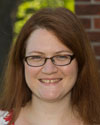 Molly Helt, Assistant Professor of Psychology and Neuroscience
Molly Helt, Assistant Professor of Psychology and Neuroscience
“Developing “Best Practice” Guidelines for Writing Intensive Courses”
As a CTL Fellow, I hope to explore various strategies for improving student writing over the course of a single semester. Without changing the content of my courses, I would like to explore the writing goals I have for my students and think about improving my assignments, group feedback, personal feedback, rubrics, and methods for having students act on writing feedback, with the goal of collecting data on the most efficient ways to improve student writing skills. In addition to developing a more coherent and consistent strategy for when and how to employ different approaches to scaffolding student writing, and taking comparison data on the efficacy of each strategy, I would also like to begin to employ additional techniques that I have thus far made little use of, such as peer feedback (including giving students the chance to talk about their own writing and hear about what others are writing), having a composition expert present to my class about effective writing across genres, “dropping in” on student works in progress via google docs, and self-checklists to complete before handing in an assignment. I wish to solicit student feedback about the types of instruction and assignments they find most helpful in terms of improving their writing, as well as they types of comments from me that they find most helpful and “actionable.” My aim is to produce a series of “best practices” on the topic of improving student writing over the course of the semester.
 Kevin Huang, Assistant Professor of Engineering
Kevin Huang, Assistant Professor of Engineering
“Group learning activities in control systems”
Control systems are found in myriad industrial sectors and technology, as many engineering objectives can be achieved with carefully crafted control strategies. As part of the core curriculum for Trinity College’s Engineering program, ENGR 312 – Automatic Control Systems, aims to provide the necessary tools for students to develop intelligent systems with feedback control. Historically, the course has been taught as a lecture-only course, with very few hands-on learning experiences. The mathematical rigor of the material presents a challenge to provide opportunities for students to develop confidence and intuition. This year, as a CTL fellow, I plan on introducing small-group application-based learning activities to the course; it is my hope that these exercises can allow students to observe, discover, reinforce and analyze control concepts first-hand. For this, I will be using new hardware: a single degree of freedom robotic cart, a Fidget Car developed as part of a workshop at Dartmouth College. Abstract course material can be applied and explored with this device, yet the platform is intuitive enough to not be intimidating to novices. Students will apply different methods learnt in class to a single platform, reinforcing comfort and continuity throughout the activities. Furthermore, by expanding the course content to beyond just pen and paper, students will hopefully gain intuition that grounds theory to real-world, tangible examples that will afford our students the confidence to approach control problems outside of the classroom. From a pedagogical standpoint, I wish to gauge the effectiveness of this small-group application-based teaching approach to extend armchair/theoretic learning objectives to application-based ones. This can be measured via various forms of evaluation, e.g. design and application type problems on exams, project-based assignments and the resultant effect on senior capstone design projects.
 Lauren Lazarus, Harold L. Dorwart Visiting Assistant Professor of Mathematics
Lauren Lazarus, Harold L. Dorwart Visiting Assistant Professor of Mathematics
“Making Mathematical Modeling an Active Learning Experience for All Levels”
Mathematical thinking and analysis can be applied to a wide variety of real-world situations and used to understand trends within different aspects of life. The existing course Math 252/254, Introduction to Mathematical Modeling, guides students in applying and extending their knowledge towards formulating and analyzing models for these various scenarios. As part of the Models & Data minor, this class attracts students in different years, majors, and levels of math background; consequently, some students find that their mathematical thinking is rusty, while others may feel well- or over-prepared at various points. As my CTL project, I intend to develop materials which will keep students at both ends of that spectrum engaged and feeling that their efforts are worthwhile. This will involve preparing warm-up materials for certain techniques, as well as developing a broad repertoire of context examples and project ideas for students to explore. Through open-ended group projects, students will have the chance to relate modeling to their own interests and grow their skills in an active manner. I hope that through this, they will build stronger connections between the disciplines and more confidence towards using math in their own applications. This CTL project may hold particular pedagogical interest for faculty who face a broad set of student backgrounds in their courses, or who would like to involve students in open-ended or interdisciplinary class projects.
 Nicholas Marino, Lecturer in the Allan K. Smith Center for Writing and Rhetoric
Nicholas Marino, Lecturer in the Allan K. Smith Center for Writing and Rhetoric
“Community Engagement and Queerness”
As a CTL Fellow, I plan to research and develop a community engagement project that not only serves Greater Hartford’s LGBTQ+ community, but also re-conceptualizes community engagement as a queer politic act within academia. Thus, my project serves two purposes, one pedagogical and the other theoretical. Beginning with the first, I am in the initial stages of creating a partnership with several organizations that work with the LGBTQ+ community: AIDS Connecticut is a non-profit organization raising awareness and funds for AIDS research. Hartford Gay and Lesbian Health Collective is a health care resource and advocacy group for the local community. Playhouse on Park in West Hartford is a performance venue which puts on at least one LGBTQ+ themed production each season. My course will be organized around three key themes: history, activism, and culture. I’ve chosen these potential partnerships because of their connection to health, bodies, and performances. These partnerships provide the opportunity for students to not only contribute to the community, but also welcome community input into the creation of knowledge. In other words, by working with these partners, students will actually be engaging in primary research on how the themes, theories, and historical issues we study in our course affect the LGBTQ+ community today. My goal is to turn this experience into a pedagogical article that argues how community engagement classrooms are inherently queer because they occupy a hybridized space between university and community. The act of community engagement itself involves not only navigating both side of this identity, but also disrupting the binary division between the college and the community all together.
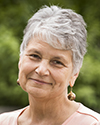 Diane Zannoni, G. Fox and company Professor of Economics
Diane Zannoni, G. Fox and company Professor of Economics
All, or at least most, economics courses are based on models, which are abstractions from reality. For example, Intermediate Macroeconomics (Econ 302) is based totally on building theoretical models to explain the working of the macro economy, e.g., employment, output, inflation. In the course, it takes me an entire semester to build two models, which reflect the two (major) different ways economists view the working of the macro economy. Students have difficulty, but do a good job of, dealing with the ambiguity, multiple explanations, and uncertainly which come with dealing with abstract models of alternative views. But I don’t think I do a good job of preparing students to use those models to choose between real world policies to solve real world problems in macroeconomics. As a CTL Fellow, I would like to work on ways to prepare students to choose and to be able to defend their choice.
I am developing a new course in Fall 2018, Econ 304, which is a 300 level elective requiring Econ 302, and I would like to use Case Studies to teach the course. Each case study would involve solving an actual problem in macroeconomics where the students are in the role of decision-maker. For example, When Bill Clinton became president in January 1993 he inherited a record fiscal deficit and an economy in a low recovery from the 1990 recession. A basic question that confronted President Clinton and his advisors was: How could he promote the recovery while at the same time reduce the fiscal deficit? As the eventual decision-maker, students would have to abstract the principal issues from the case and relate them to macro theory (which they learned in Econ 302), identify the various possible routes (policies) and the theoretical implications of those policies, justify a policy they would choose, and then evaluate what actually happened. The context (legal, social, and ethical) and supporting data (numerical, testimony, policy statements, etc.) will be provided by me and by the students’ research.
